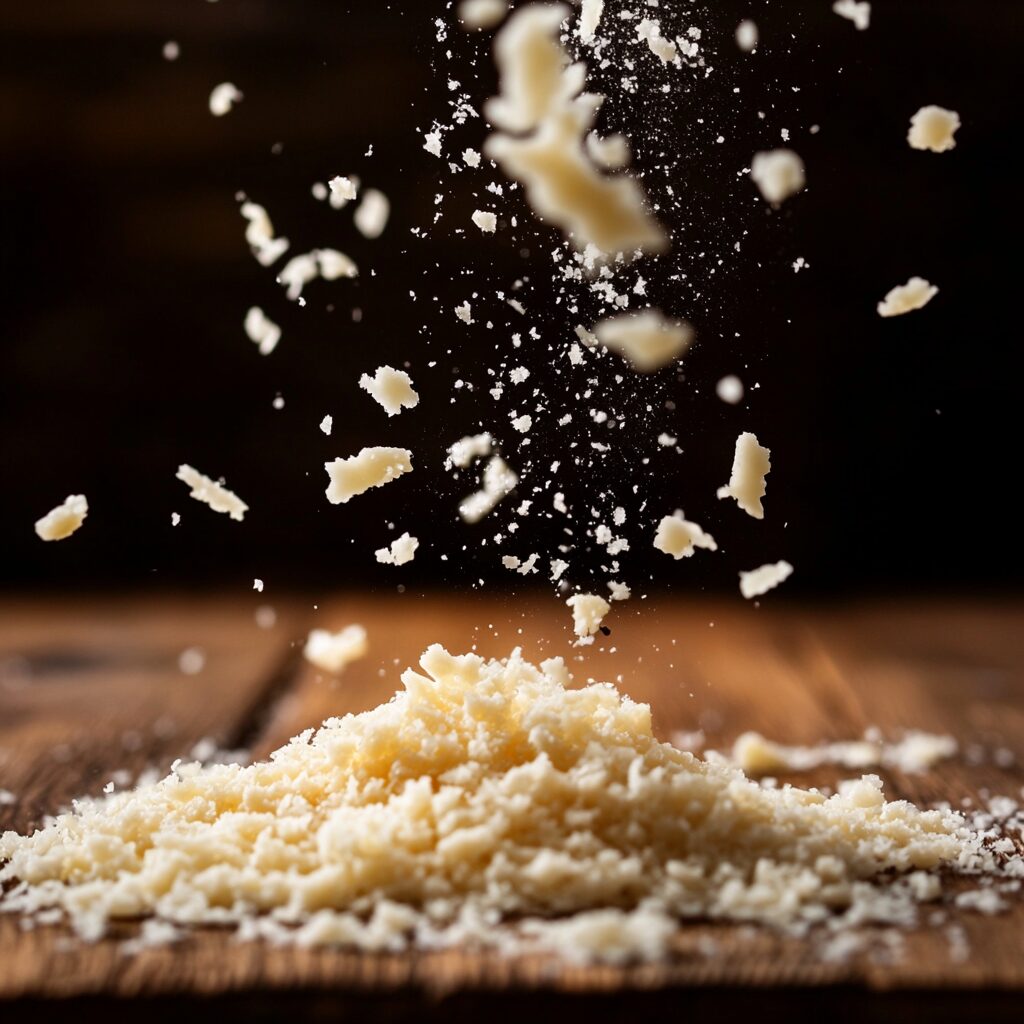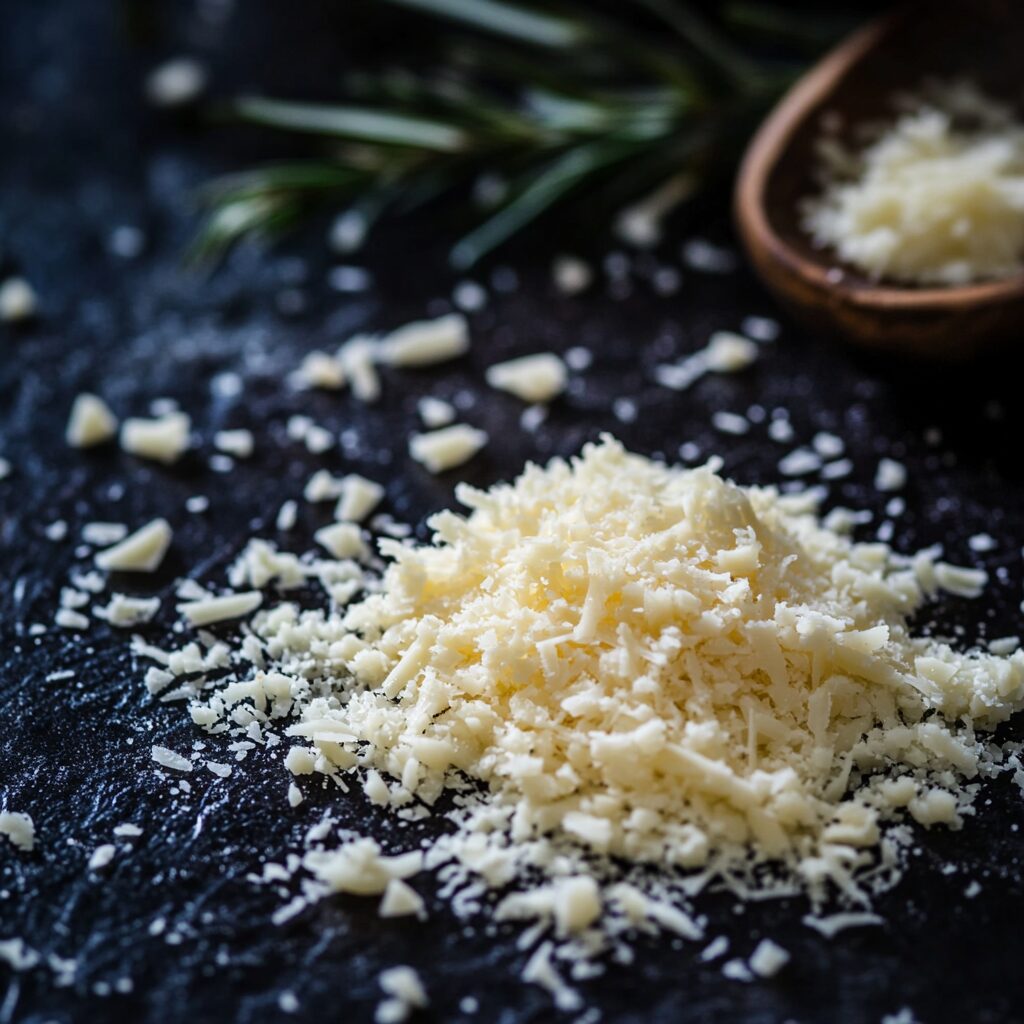Wood pulp in food isn’t a new phenomenon. Dating back to the 1700s, European bakers mixed sawdust into bread as a cheap filler for the poor. Today, a refined version of this practice continues, though now it’s known by a different name: cellulose. This FDA-approved ingredient appears in many common foods, often without consumers realizing it. While the thought of eating wood might raise eyebrows, understanding what cellulose is and where it appears can help you make informed decisions about your food choices.
Parmesan cheese contains more than just cheese

The most widely known example of cellulose use is in grated parmesan cheese. Some brands contain up to 8.8% cellulose, which prevents the cheese from clumping together. This wood-derived additive serves as an anti-caking agent, ensuring the cheese remains spreadable and free-flowing.
While this might seem concerning, the FDA has approved cellulose use since 1973. However, consumers wanting to avoid it can opt to grate their own cheese from blocks, which typically don’t contain added cellulose.
Bread and baked goods frequently include wood fiber
The practice of adding wood-derived ingredients to bread has historical roots. Modern manufacturers use cellulose to improve texture and extend shelf life in various baked products, including whole wheat bread, bagels, and packaged cookies.
The cellulose acts as a preservative and helps maintain moisture levels. It’s particularly common in products marketed as high-fiber, where cellulose contributes to the total fiber content without adding calories.
Ice cream contains surprising wood-based additives

Your favorite frozen treats likely contain cellulose too. Ice cream manufacturers use it as a stabilizer and thickener, preventing ice crystals from forming and creating a smoother texture. Without these additives, ice cream would become grainy and develop an unpleasant texture when stored.
Cellulose in ice cream helps maintain its creamy consistency and prevents separation. This is especially important in low-fat varieties where cellulose helps mimic the mouthfeel of full-fat ice cream.
Vegetarian meat alternatives rely on wood fiber
Plant-based meat alternatives often contain cellulose as a binding agent and texture enhancer. Veggie burgers and soy-based meats use this ingredient to create a more meat-like texture and improve product stability.
The cellulose helps these products maintain their shape during cooking and provides a fibrous texture that mimics real meat. It also helps retain moisture, preventing the products from becoming dry during preparation.
Salad dressings and sauces hide wood-derived thickeners

Many commercial salad dressings and sauces contain cellulose as a thickening agent. This includes everything from tomato sauce to Worcestershire sauce. The additive prevents separation and maintains consistent texture throughout the product’s shelf life.
Without cellulose, these products would require frequent shaking and might separate into layers. The wood-derived fiber helps create the stable, smooth consistency consumers expect.
Frozen foods depend on wood fiber stabilizers
Frozen pizzas, breakfast sandwiches, and filled pasta often contain cellulose to maintain their texture through freezing and reheating. The additive helps prevent moisture migration and ice crystal formation, which can ruin the texture of frozen foods.
This application of cellulose is particularly important in preventing freezer burn and maintaining the quality of frozen products over time. It helps ensure that the food maintains its intended texture when prepared.
Coffee products incorporate wood-based ingredients
Even your morning coffee might contain cellulose. Coffee creamers and flavored syrups often include this ingredient as a thickener and stabilizer. It helps create the smooth, creamy texture consumers associate with these products.
In coffee additives, cellulose prevents separation and helps maintain consistent texture, even when exposed to hot liquids. This ensures your coffee maintains its desired consistency until the last sip.
While the presence of wood-derived cellulose in food might seem unsettling, it’s important to note that this FDA-approved ingredient serves various functional purposes and passes through the body without being digested. For those who prefer to minimize their exposure to food additives, focusing on whole, minimally processed foods and reading ingredient labels can help guide purchasing decisions. The next time you encounter “cellulose” on an ingredient list, you’ll understand exactly what it is and why it’s there.

